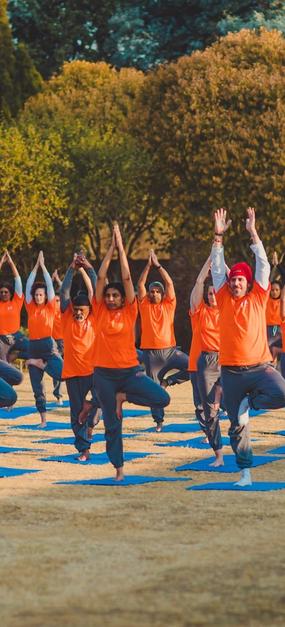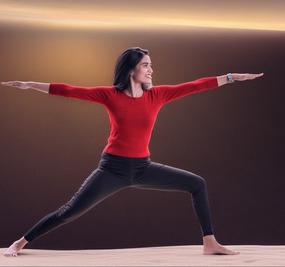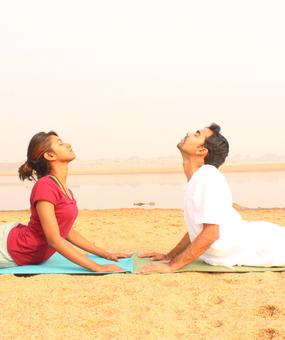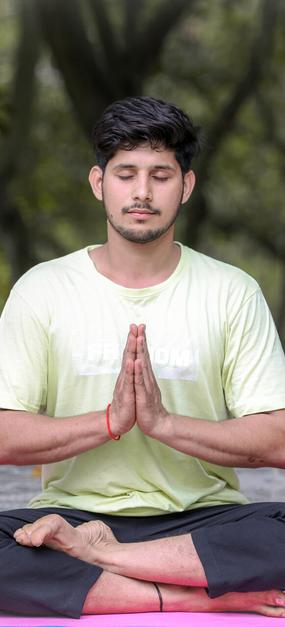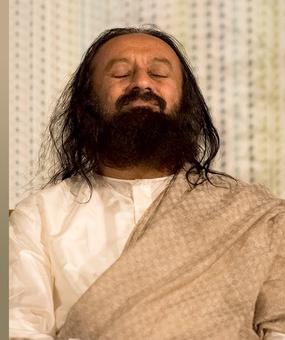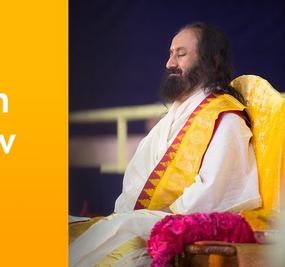Yoga is not just doing some exercise. Yoga is much more. It is to bring quality to our life. It expands our awareness, sharpens our intellect, and enhances our intuitive ability. We are all gifted with a sixth sense, but we seem to be losing it in the hustle and bustle of life.
Yoga means union. Yoga unites our hearts, mind, body and spirit and unites us with the people around us. Yoga is something that brings humility and humour, both. And both are your very nature.
Wonder – Preface to Yoga
Wonder is the preface to Yoga. The ancient Rishis have said that vismayo yoga bhumika. A sense of wow or wonder is a preface for Yoga. When your observation of yourself and nature creates a wow in you, then mysticism dawns in your life. Then, the connection to something ethereal, something so beautiful, something so concrete yet very abstract comes up in our life. If you don’t wonder, you’re not a Yogi and the wonderment that one faces anywhere will lead you to Yoga.
“Yoga takes you close to your true nature & helps you to harmonise with nature. Peace is our nature & yoga leads one to inner peace”
~ Gurudev Sri Sri Ravi Shankar
Types of Yoga
When there are no two, and when nothing is separate, where is the question of uniting? Unity is an illusion. This is called Gyaan Yoga: There are no two; we are all one. Uniting implies that there is an effort. If you had to unite the right hand with the left hand, it appears as an effort.
But wake up and see, they are your own hands; they are already one. You cannot say, ‘I am uniting my hands’; they are already one. This is Gyaan Yoga.
Bhakti Yoga means there is no other; everything and everyone is a part of me. A sense of reverence and deep love for all that is, is called Bhakti Yoga.
Then comes Karma Yoga. Doing anything with passion, with full attention to it, is Karma Yoga. Now we play many roles in life, but are we playing every role with passion, responsibility, and with care and concern? This is Karma Yoga.
Hatha Yoga is when you think you cannot do a particular thing, yet stretching beyond your perceived ability. So, all these are different types of Yoga.
Skill in Action Is Yoga
Lord Krishna says in the Bhagavad Gita, “Yogah Karmasu Kaushalam“, meaning “Yoga is skill in action”. Yoga and skill are synonymous. If you are skilful, it means that somewhere you have followed the principle of Yoga.
“Yoga is a skill in action – a skill to live life; manage the mind; to be with people; to be in love & not let that love turn into hatred.”
-Gurudev Sri Sri Ravi Shankar
The skill in action is to keep your spirit uplifted, your energy not drained and yet complete your job. This comes only through Yoga. Usually, when you do some work, you tend to drain yourself. And by the time the fruit of action comes, you are so exhausted that you are unable to enjoy it. Yoga is the skill that keeps your spirit alive and your energy high and brings you achievement.
In another sense, Yoga is how skillfully you can communicate and how skillfully you can act in any given situation. This, again, is Yoga.
Yoga and Quantum Physics
We are all one: this is what Quantum Physics and Quantum Mechanics also say. If you ask a Quantum Physicist, he will say, ‘This is all just wave function’, and this is exactly what Gyaan Yoga is. In life, we need both an understanding of Quantum Physics (i.e., an understanding of the absolute) and Classical Chemistry (i.e., an understanding of relativity). There has been a lot of confusion in this field. Many people have asked, ‘Why is it that India, despite having such great wisdom, has gone back in the last few centuries?’. This is because there was confusion between Classical Chemistry and Quantum Physics.
What we need to know is that they both have their place, and they both are essential. See, in a room in a building made of wood, everything is made up of wood: this is Quantum Mechanics. At the same time, the door is not the floor, the floor is not the ceiling, and the ceiling is not the sofa: this is Classical Chemistry. Both have their place; both are true, but there is a distinction. And seeing the distinction is called Viveka. Seeing what is temporary and what is permanent in life, and what we need to do and what we should avoid doing, is Viveka.
Yoga Is Fun
Simple things have caused huge disasters because we lack humour. Yoga is serious and at the same time, it is full of fun. So, today, ask yourself, ‘Am I being natural? Am I connecting to myself, and to everyone around me? Or am I bothered about my own self-image a lot? Am I sitting and thinking about what others are thinking about me?
Something that makes you happy, something that uplifts your spirit, something which makes you strong, vibrant, and powerful, why would you not do it? Again, it is not just an exercise. Because people have no idea about it, they think it is just an exercise. Yoga is something that can relieve us all from stress.
Yoga is a skill in action – a skill to live life; manage the mind; to be with people; to be in love & not let that love turn into hatred.
Gurudev Sri Sri Ravi Shankar
The Eight Limbs of Yoga
There are eight limbs of Yoga. Yama Niyama, Asana, pranayama pratyahara, dhyana dharana samadhi. The propounder of Yoga, Maharishi Patanjali, has gone into the details of each limb in the Yoga Sutras. And he has described the results that you can expect from each one of these. Yoga has eight limbs. Like a chair has got four legs. Yoga has eight legs, say eight limbs. Each one is connected with the whole, so if you just pull one, everything else will come. Just like, if you pull one leg of the chair, the whole chair comes. See, when a body is developed, the entire body develops together, and all the limbs developed together. It’s not that the nose develops first, and then the ear comes. Simultaneously, all the aspects and all the limbs of the body develop. That’s why Patanjali has said these are all limbs of Yoga. But unfortunately, people think these are all stages. One after another, we have to achieve. This is where a wrong understanding or misconception has crept in about Yoga.
Patanjali had said the eight limbs developed simultaneously; else, he would have called it eight steps to Yoga. He has been very precise and very careful in using the words. Here, to the degree you are truthful to the degree you practise non-violence, to that degree you will be proficient in pranayama, and to that degree, you will be going deep into meditation. It’s the other way so that you can start with meditation, and then you will see truth and non-violence.
Everything becomes part of your life, and this is in our experience. For hard-core criminals, we first teach them a little bit of meditation. As soon as one learns meditation, everyone finds the anger has disappeared, and peace has come. An appreciation of the value of non-violence and character building, all these values come up simultaneously, so they all have to go together, and they do go together.
Summary
Yoga is much more than a mere exercise routine. It is a holistic practice that brings profound benefits to our lives. It expands our awareness, sharpens our intellect, and enhances our intuitive abilities. Yoga unites our hearts, minds, bodies, and spirits, fostering a sense of unity with others. It cultivates humility, humour, and a deep love for all beings.
There are various paths of Yoga to explore. Gyaan Yoga helps us realise the inherent oneness in all things, while Bhakti Yoga nurtures reverence and love for everything around us. Karma Yoga teaches us to approach all our actions with passion, responsibility, and care. Hatha Yoga enables us to stretch beyond our perceived limitations.
Yoga’s universal appeal lies in its ability to bridge the gap between science and spirituality. Just as quantum physics reveals the interconnectedness of all things, Yoga reminds us of our innate unity with the universe. It offers an understanding of both the absolute and the relative aspects of life, allowing us to discern what is temporary and permanent.
The beauty of Yoga lies in its simplicity and depth. It is not limited to physical postures; rather, it encompasses emotional integration, spiritual elevation, and a touch of mysticism. Yoga is a complete science that unites our entire being—body, mind, and spirit. It holds the potential to awaken our innate qualities of freshness, sincerity, and fearlessness, enabling us to approach life with childlike simplicity and a prejudice-free mind.
The Happiness Programs and the Sahaj Samadhi Dhyaan Yoga Program offered by the Art of Living programs provide a valuable platform to learn and deepen your understanding of Yoga and meditation, along with many other benefits. These programs offer guidance, techniques, and wisdom to help us integrate Yoga into our daily lives.



